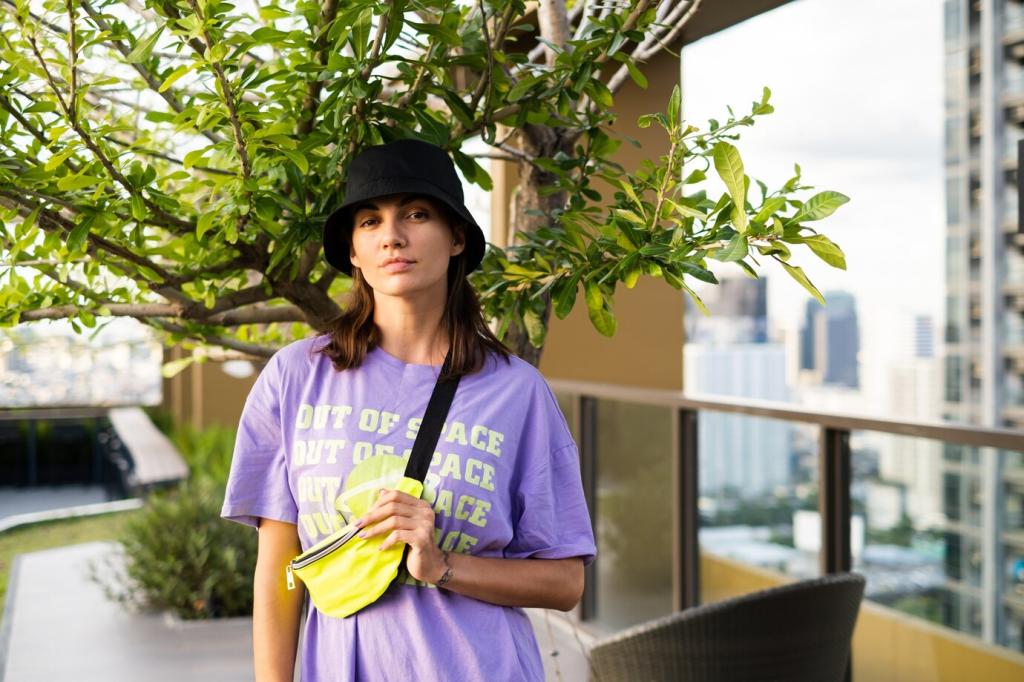Sustainable Fashion Tips for Everyday Wear
Discover actionable, realistic ways to embrace sustainable fashion in your daily life. This guide explores conscious clothing choices, responsible care habits, mindful shopping, and creative approaches to maintaining a stylish wardrobe while treading lightly on the planet. Learn to make simple changes that not only reduce your environmental footprint but also enhance your personal style and confidence.
Choose Timeless Pieces Over Fast Trends
Choosing garments made from high-quality, durable fabrics ensures they last longer and maintain their appearance after repeated wears. Natural fibers like organic cotton, linen, hemp, and responsibly sourced wool often outlast synthetic blends, minimizing the frequency of replacement. High-quality construction, such as reinforced seams and sturdy buttons, matters just as much as fabric choices, so inspect garments carefully before purchasing.


Before making a purchase, invest time in learning about a brand’s ethos and practices. Look for companies that are transparent about their sourcing, manufacturing practices, and labor conditions. Many brands publish detailed information about their supply chains, environmental policies, and community initiatives, which helps you make informed decisions that reflect your values.

Reliable certifications such as Fair Trade, GOTS (Global Organic Textile Standard), and B Corp offer assurance that a brand meets specific social and environmental criteria. Transparency is key—brands that openly share their processes, challenges, and successes demonstrate a commitment to genuine progress rather than greenwashing. Trustworthy labels and third-party verification validate a brand’s sustainability claims.

Sustainable brands can sometimes carry a higher price tag, but this often reflects fair wages and responsible production. Consider the true cost of clothing, including the environmental impact and human labor behind each item. Instead of buying multiple cheap items, allocate your budget toward fewer, high-impact purchases that align with both your personal ethics and practical needs.
Practice Mindful Shopping Habits
Reflect Before Purchasing
Pause before adding an item to your cart, considering if it fills a genuine gap in your wardrobe or would be redundant. Ask yourself whether you’ll wear the piece frequently and if it coordinates with your existing clothes. This reflection often curbs impulse buys and ensures every addition has long-term value.
Embrace the One-In, One-Out Rule
To cultivate a balanced wardrobe, consider adopting the one-in, one-out approach. When you buy something new, part ways with an item you no longer wear by donating, selling, or upcycling it. This practice not only prevents clutter but also encourages you to evaluate whether each new purchase is truly necessary.
Set Personal Shopping Limits
Create boundaries around when and how often you buy new clothes. This could mean setting a monthly budget, shopping only during specific seasons, or pledging to limit purchases to a set number of items per year. Personal limits foster discipline, reduce unnecessary consumption, and promote thoughtful wardrobe curation.

Embrace Secondhand and Vintage Fashion

Physical thrift shops and online resale platforms offer vast selections of pre-loved clothing across a range of styles and price points. From designer finds to casual basics, these marketplaces often provide gently used items at a fraction of their original cost. Shopping secondhand gives clothing a new lease on life and diverts textiles from landfills.

Previous slide
Next slide
Experiment with Creative Styling and Upcycling
Mix and match existing pieces in innovative ways, such as layering shirts under dresses or combining textures for a fresh effect. Playing with accessories, belts, or scarves can transform staple items into statement looks. Experimenting with multiple combinations maximizes each garment’s potential and keeps your style engaging and dynamic.

Educate Yourself and Advocate for Change
Read articles, watch documentaries, and follow reputable organizations to keep up with issues facing the fashion industry, such as pollution, labor rights, and waste. Understanding these challenges gives context to your daily choices and motivates ongoing commitment to responsible fashion practices.

